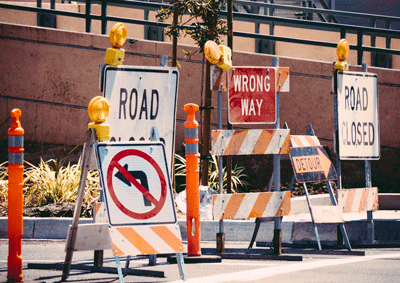It may seem like a daunting challenge to achieve bipartisan collaboration on issues between the new Congress and the Administration.
But there’s one issue that could bring Democrats and Republicans together: infrastructure. A bipartisan bill that invests in our nation’s infrastructure, especially its public transit systems, would have wide-ranging benefits for workers, businesses, and the economy.
For U.S. commuters and communities, under funded roads, bridges, and public transit systems aren’t a matter of political opinion— they’re a fact of life.
In its latest Infrastructure Report Card, the American Society of Civil Engineers (ASCE) gave the nation’s bridges a meager C+ grade. In fact, for every 27 miles of U.S. highway, there is one structurally deficient bridge. Americans travel across faulty interstate bridges 60 million times a day.
Our roads are in even worse shape, earning a D in the Civil Engineers’ assessment. One in every five miles of U.S. highway is crumbling. These poorly maintained roads are one reason why Americans spend 6.9 billion hours a year sitting in traffic at a cost of $160 billion in wasted time and fuel.
But the most urgent transportation crisis involves our public transit systems. Years of under investment has resulted in inadequate public transit infrastructure that garnered a D- from the ASCE. This was the lowest grade received by any category.
America faces a public transit maintenance backlog of more than $90 billion, according to the U.S. Department of Transportation. That’s just for modernization— it doesn’t include any investment in new public transportation services and facilities that our growing country needs.
And because of these under funded public transit systems, chronic commuting delays have made workers less productive, suppressing economic growth in the process.
Indeed, the public transit maintenance backlog is expected to cost the country $180 billion in lost gross national product through 2023. This includes $109 billion in lost household income— or the 162,000 jobs lost as a result of these aging transit systems.
Fortunately, Congress and the Administration have both expressed interest in addressing our nation’s infrastructure. In March 2017, President Trump called for a $1 trillion infrastructure package. He has since increased that figure to $1.7 trillion. The American Public Transportation Association has identified at least $232 billion in projects that could be addressed through a new infrastructure bill.
Democrats are just as enthusiastic about investing in infrastructure. Speaker of the House Nancy Pelosi and Senate Minority Leader Chuck Schumer have called infrastructure a top priority for the new Congress.
Republicans in Congress are also on board. Rep. Sam Graves (R-MO), ranking member of the House Transportation and Infrastructure Committee, said last November that he’s willing to find a bipartisan solution to America’s infrastructure woes.
To achieve the long-overdue infrastructure improvements America needs, Congressional lawmakers and the Administration will need to do some traveling of their own— across the aisle.
Paul P. Skoutelas is president and CEO of the American Public Transportation Association.
